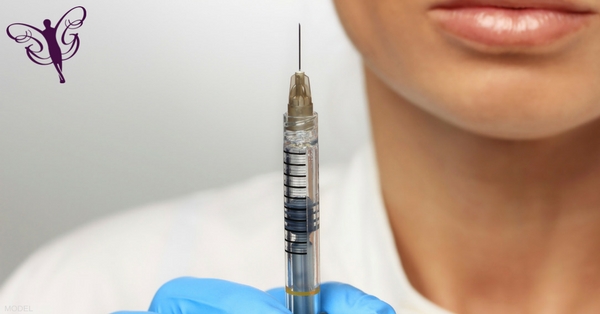Injectable fillers and BOTOX. At my medical spa in Houston, many patients have heard of these products—or even used them themselves—but aren’t always sure how they differ. These products are both injectable, and they both aim to fight the look of wrinkles. But they work in very different ways. If you’re planning a nonsurgical rejuvenation or just a simple touch-up, it’s important to know what gives each product its power.
BOTOX
The active ingredient in BOTOX is botulinum toxin type A, which has the ability to reduce activity in specific muscles. Once injected, BOTOX surrounds the nerve and prevents receptors from receiving the impulses that cause muscle movement and, therefore, wrinkles. By reducing muscle movement, BOTOX is useful for treating lines and wrinkles that develop as the result of facial movement.
BOTOX is FDA-approved to reduce the look of crow’s feet, forehead lines, and “worry lines” between the brows, sometimes called “11s.” BOTOX has been used by the medical community for years to treat conditions caused by excessive muscle or nerve activity, such as muscle spasms or chronically twitchy eyelids. Today, in addition to its aesthetic indications, BOTOX is also showing promise at treating migraine headaches, excessive sweating, and even depression.
While versatile, BOTOX and its related treatment, Dysport®, are also very powerful. It’s important to have them administered by a trained medical professional, such as a physician or a nurse injector. When administered for aesthetic indications, BOTOX can create results that last between 3 and 6 months. Dysport results can occasionally last a bit longer.
Fillers
While BOTOX works by reducing muscle activity that cause wrinkles, fillers target another manifestation of aging—loss of volume. As time passes, your skin produces less collagen than it did when it was young. This causes sagging and looseness, symptoms that can be extremely difficult to address with topical products alone. Fillers counteract this effect by replacing volume, usually in the form of smooth hyaluronic acid gel.
Other types of fillers have ingredients that actually encourage the production of more collagen, for a 1-2 punch of improvement. Unlike BOTOX, fillers don’t affect the nerves and simply add physical volume. Fillers are effective for:
- Filling in lines and creases on the face
- Plumping lips
- Enhancing facial contours
Fillers can be used to treat other areas of the body, too. Some of their unexpected uses include restoring volume to the backs of the hands, filling in depressed acne scars, adding projection to the chin or jawline, and even augmenting the buttocks.
Because filler products differ so much between themselves, their staying power can vary, too. Bellafill®, which is best for acne scars, can last for up to 5 years. Sculptra® Aesthetic and some forms of JUVÉDERM® can last for up to 2 years. ALMI™, a unique “All Natural” filler alternative that uses the body’s regenerative cells and fat tissue to rejuvenate and fill hollowed areas of the face and hands, can last up to a year. RADIESSE®, which uses small calcium spheres to support new collagen development, can last from 9 months to over a year.
You’ll find a lot of diversity in the world of injectables, and both BOTOX and fillers are safe and effective for refreshing and rejuvenating your look. To better understand what’s possible, take a look at my gallery of before-and-after photos. If you’re curious about what injectables can do for your skin, contact my practice and let’s get started.



Leave a Reply